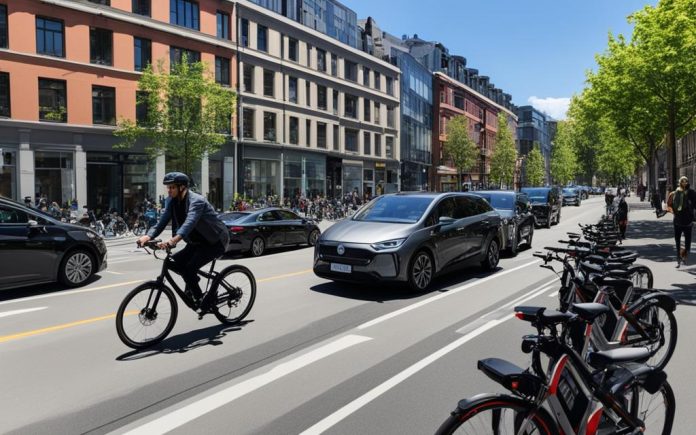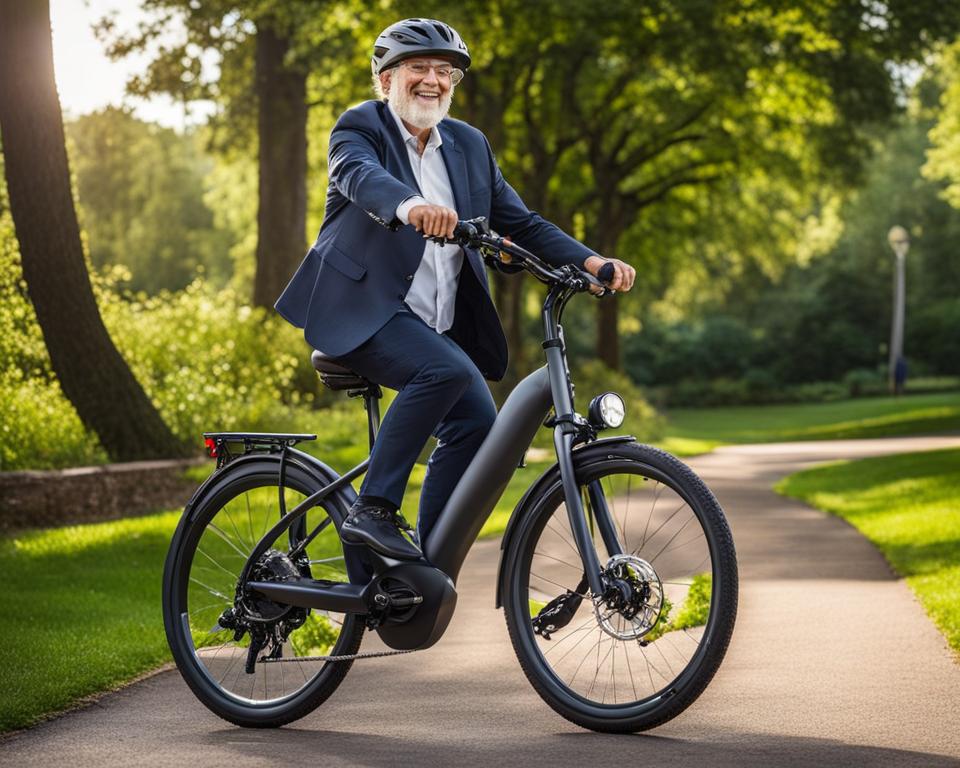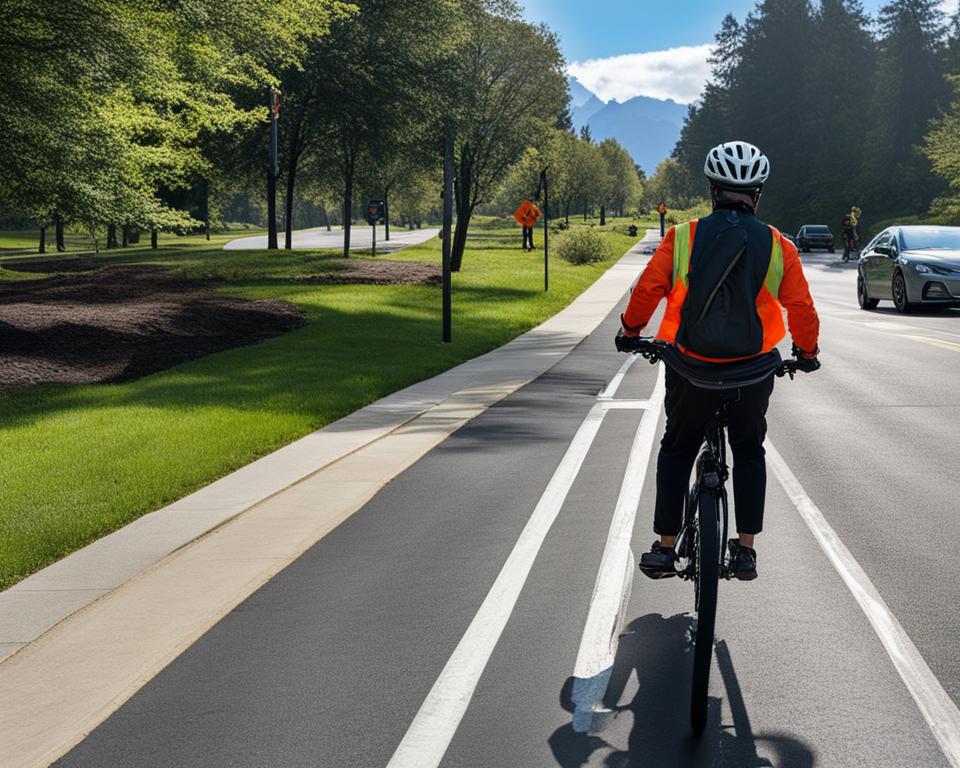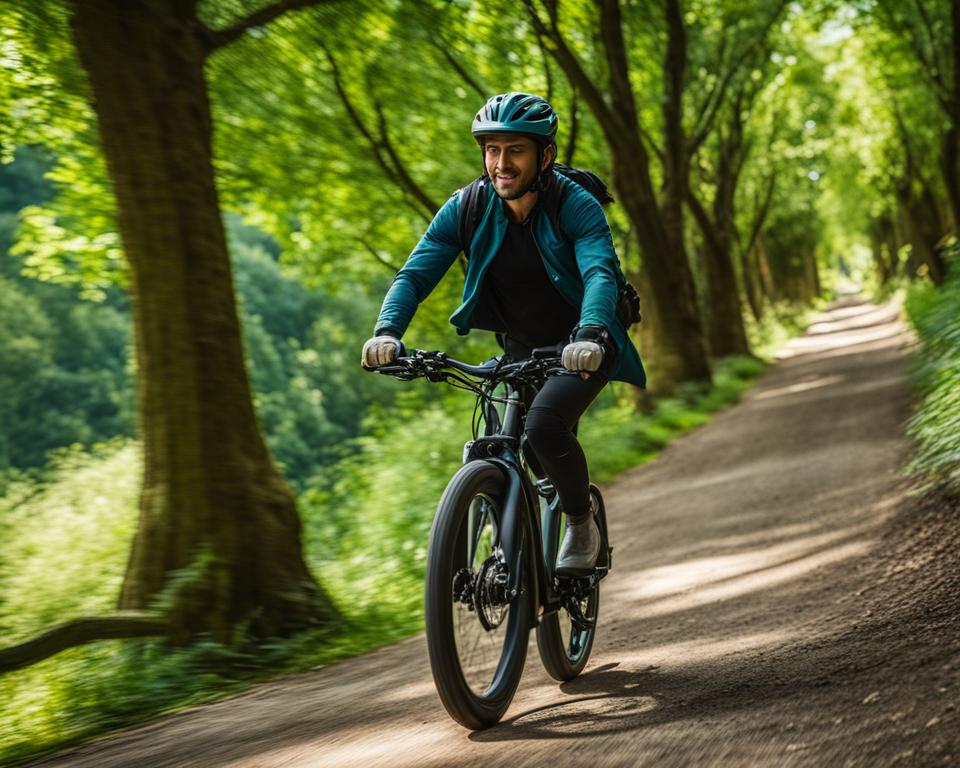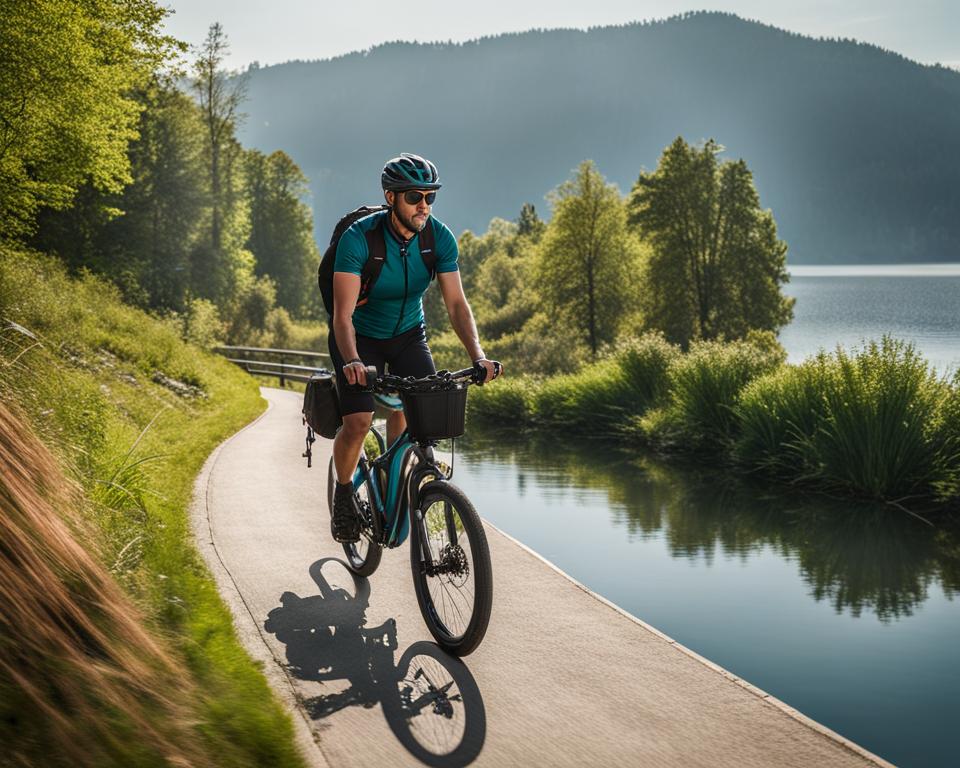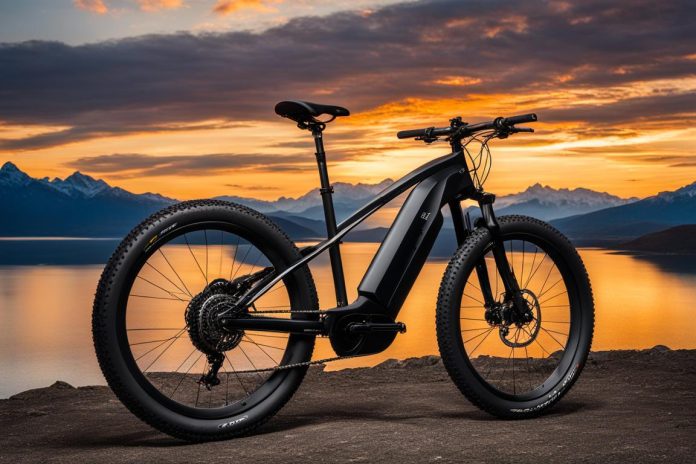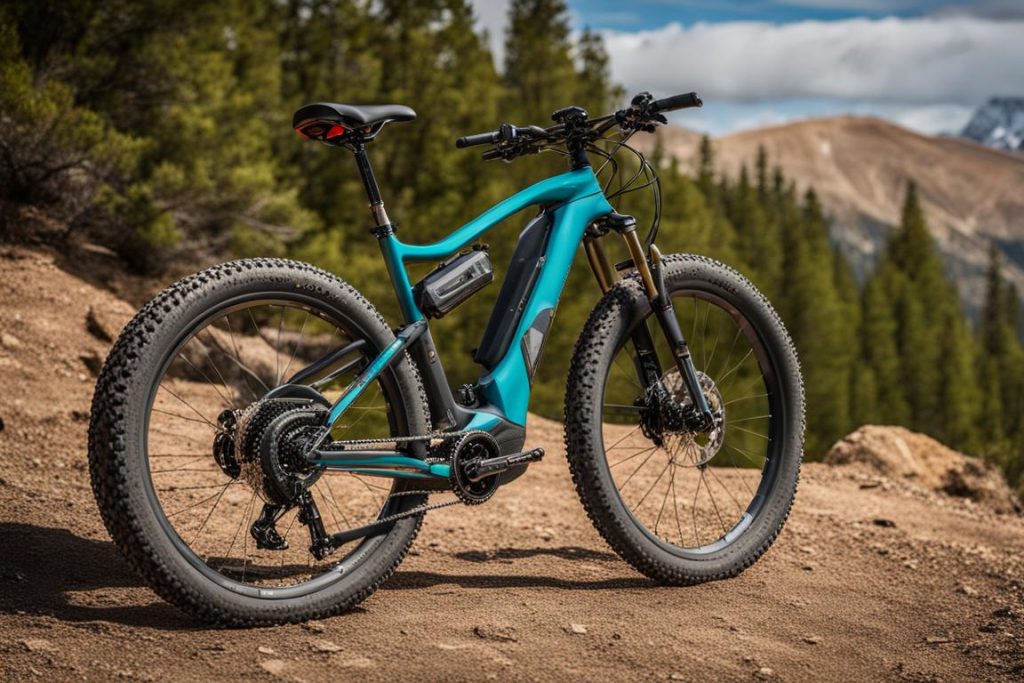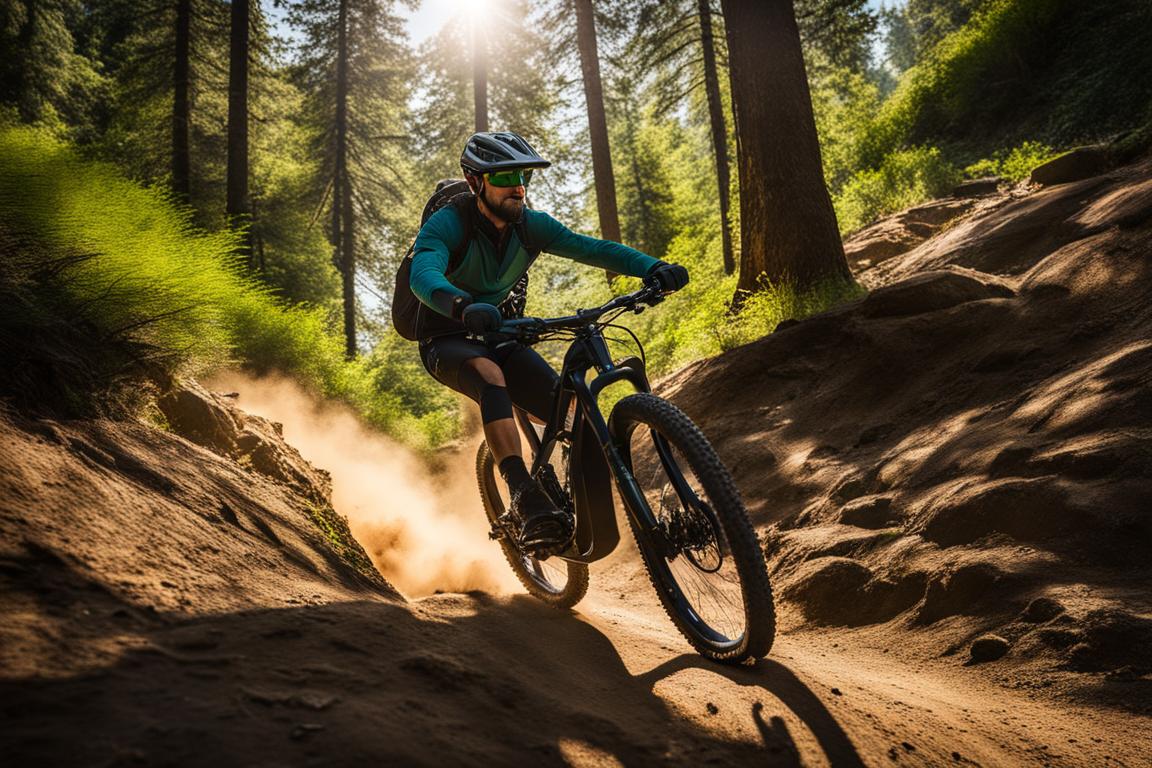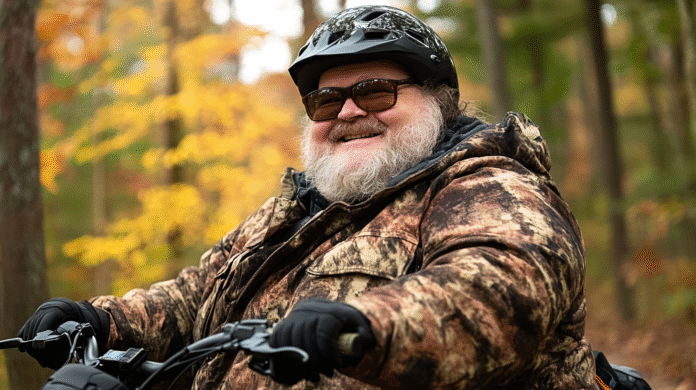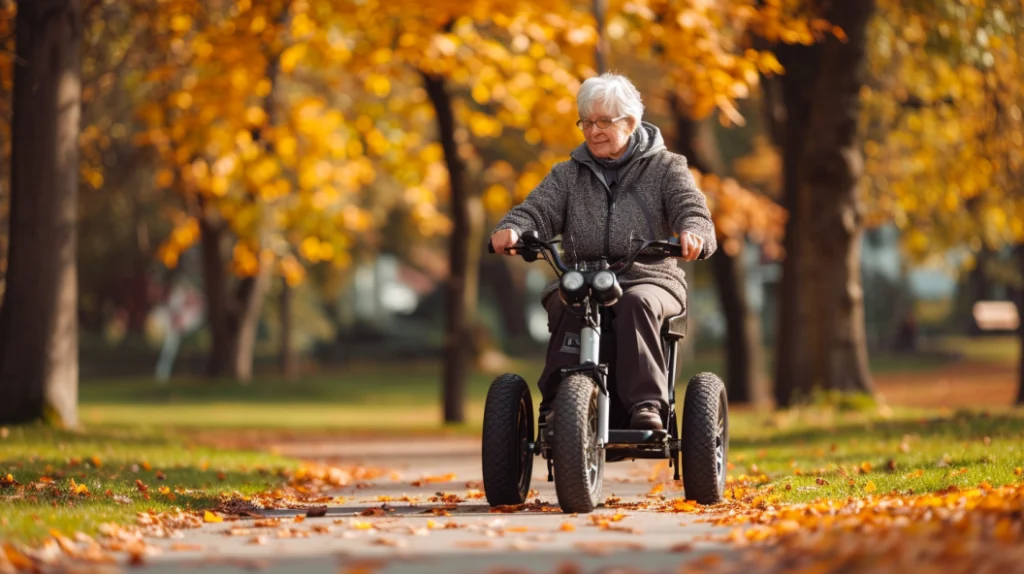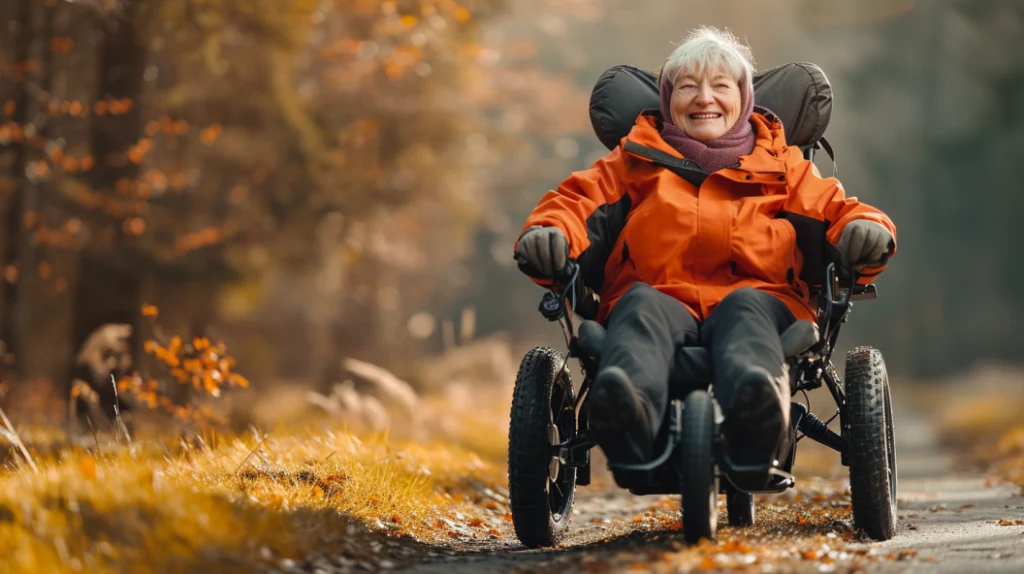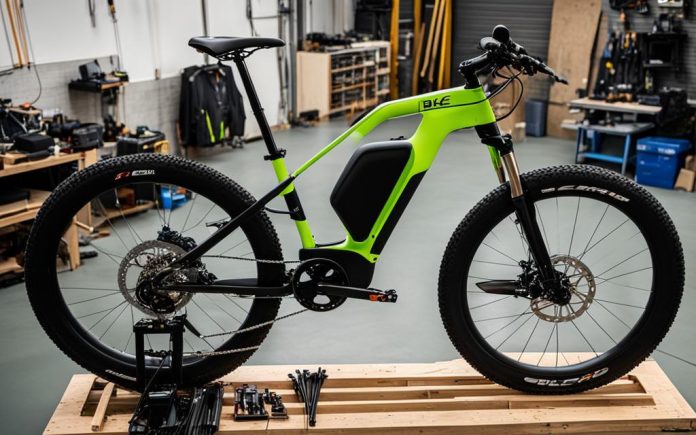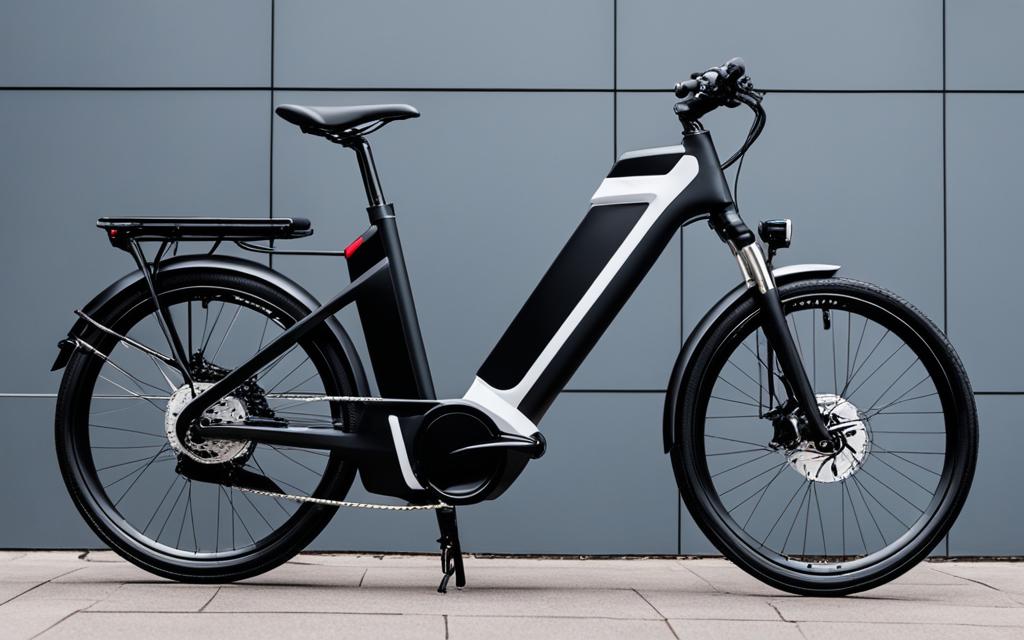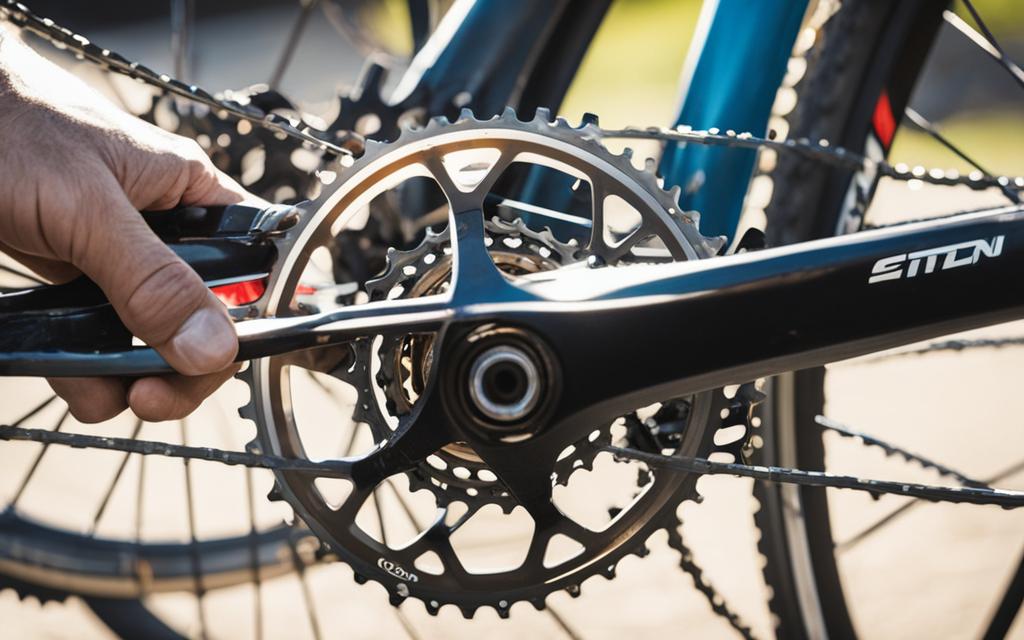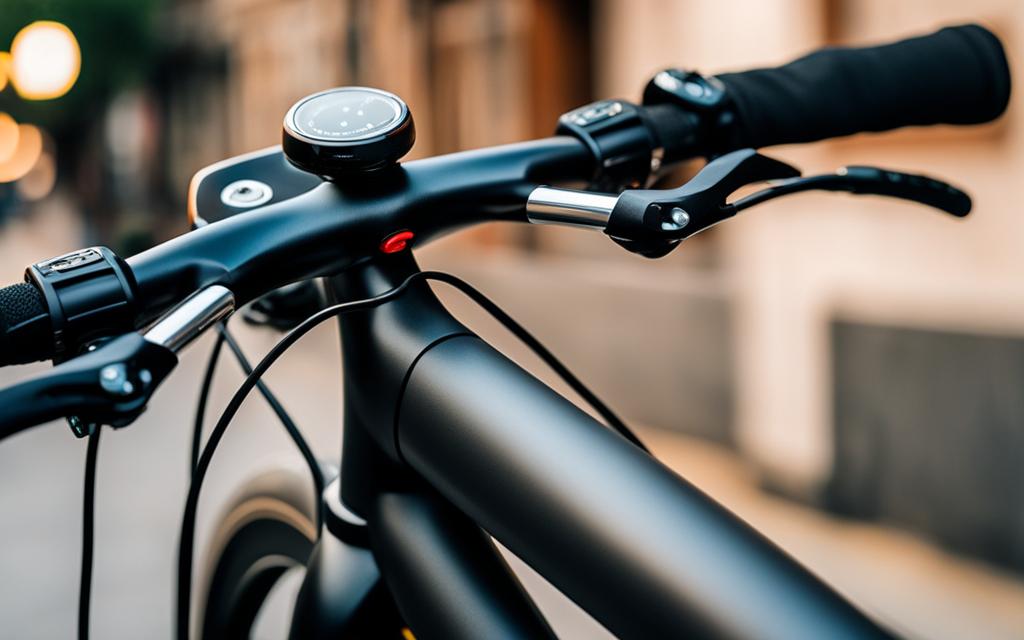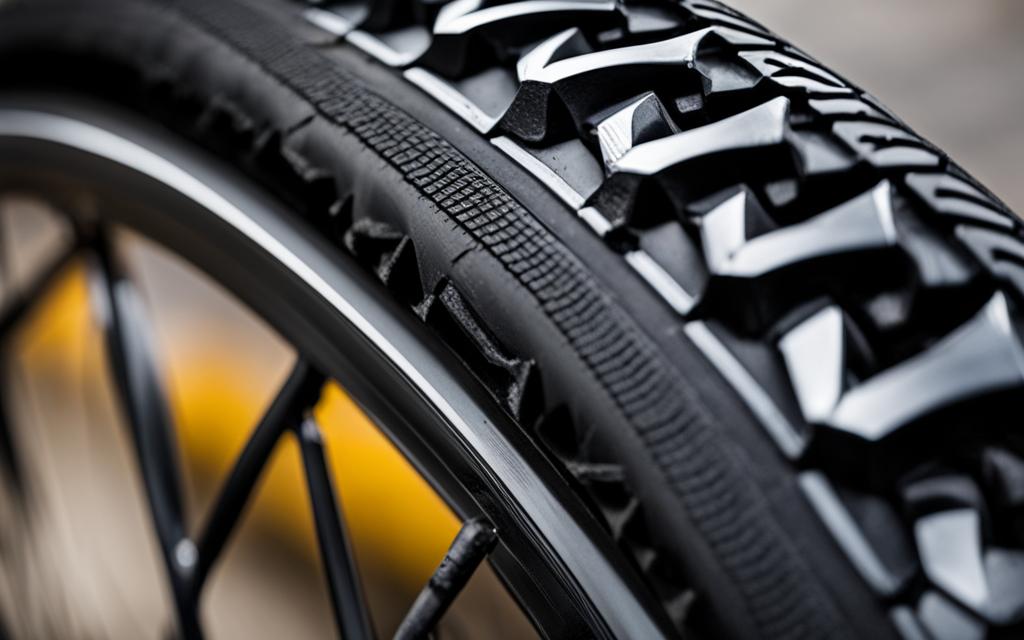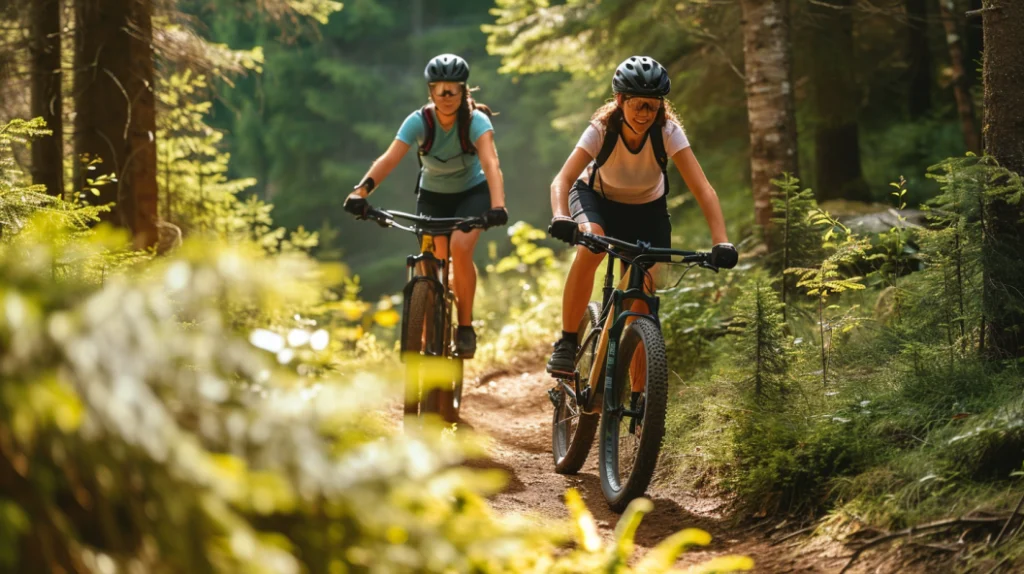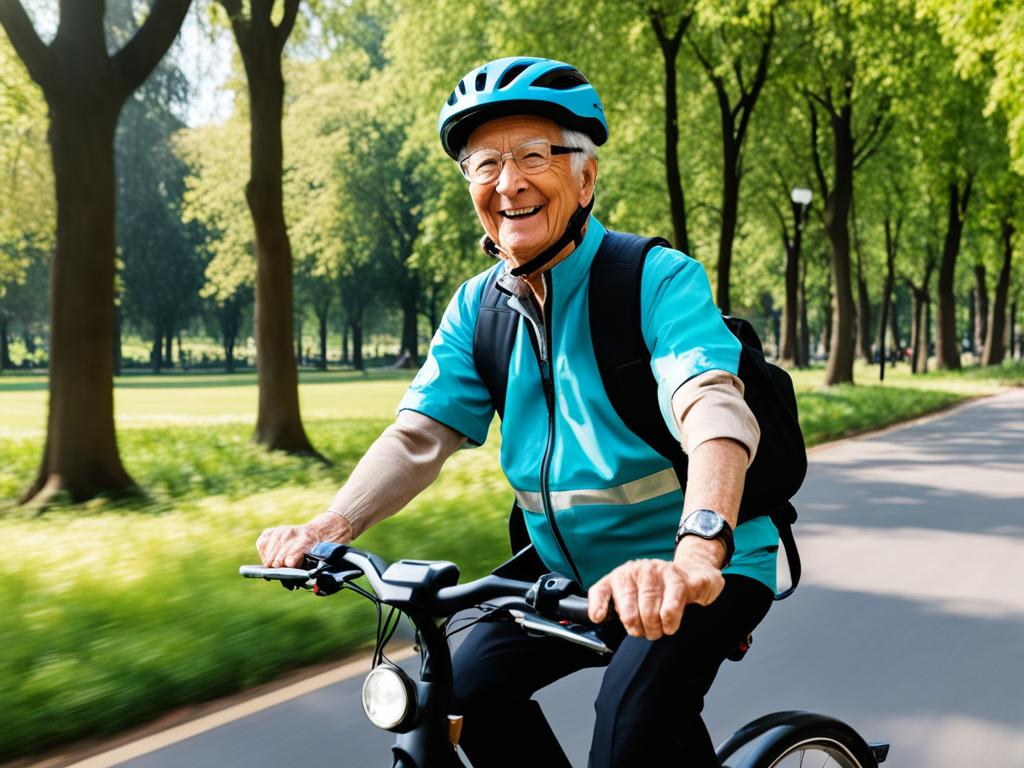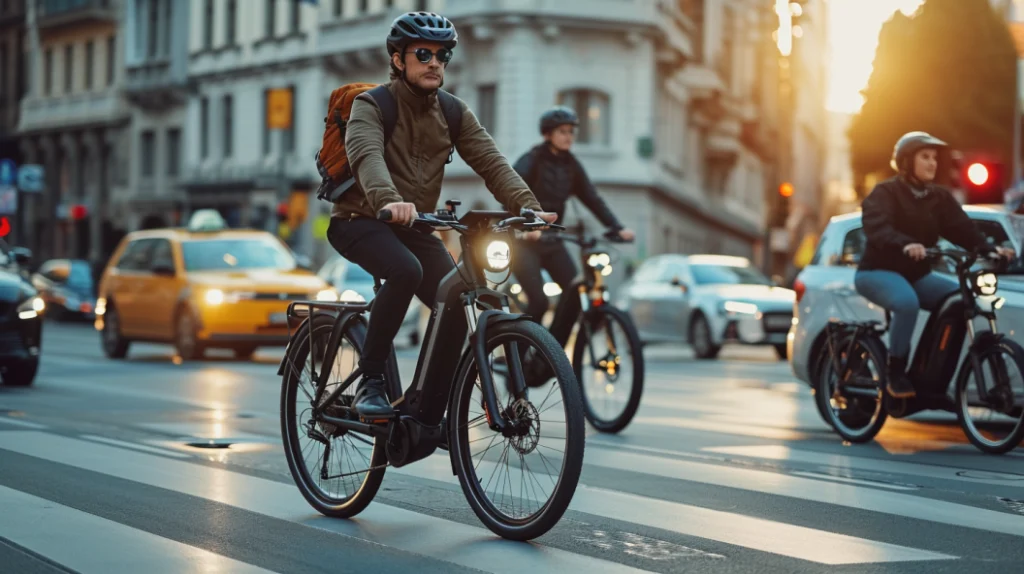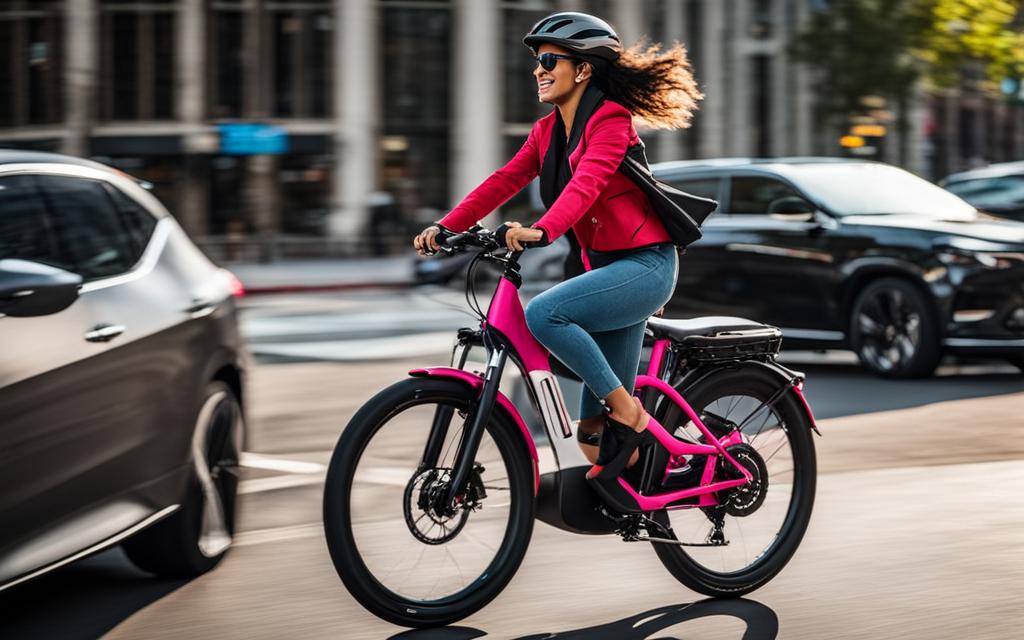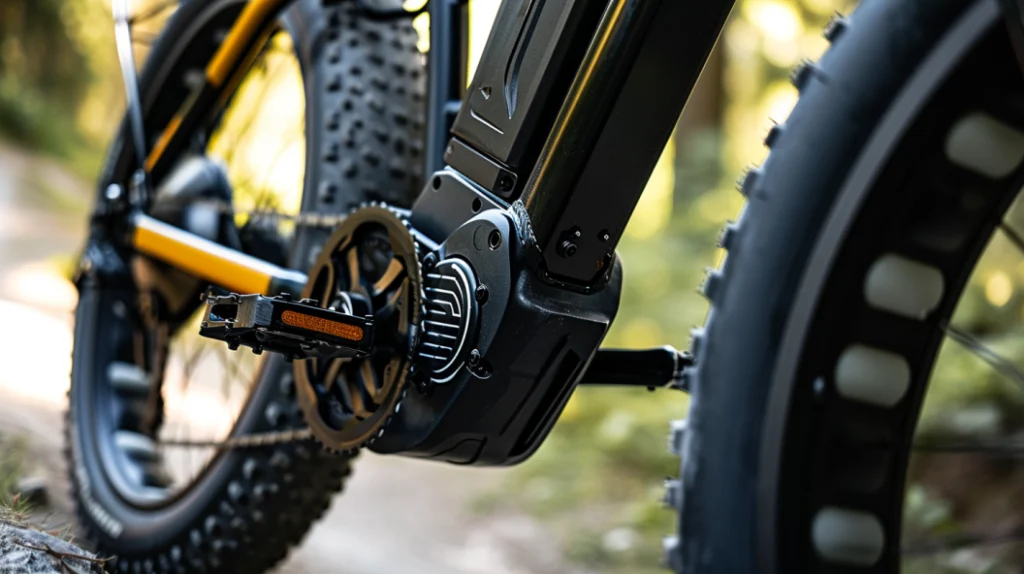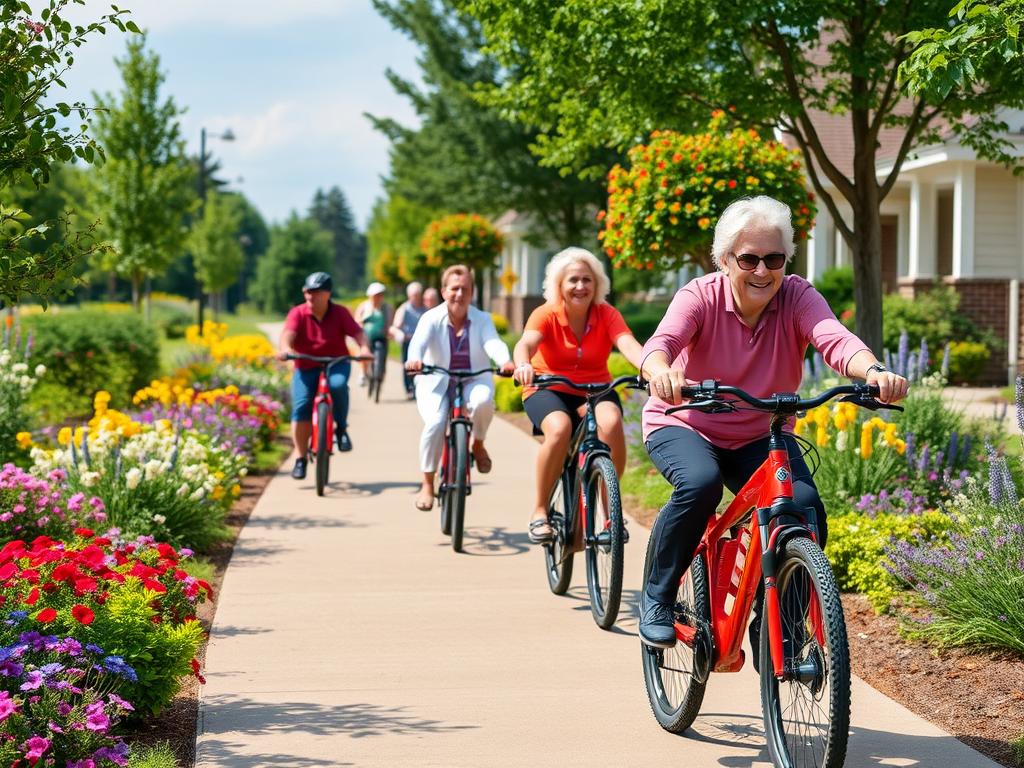Welcome to EbikesUS.com, your ultimate guide to the world of electric bikes! Today, we dive into the exciting topic of whether eBikes vs cars for urban commutes in the USA. As cities become more congested and environmentally conscious, many individuals are seeking alternative modes of transportation that are cost-effective, efficient, and sustainable.
Electric bikes, or e-bikes, have been gaining popularity as game-changing solutions for urban mobility. Not only do they offer a greener way to commute, but they also provide numerous benefits to riders. Let’s explore whether eBikes have the potential to replace cars in urban environments.
Table of Contents
Key Takeaways:
- E-bikes offer a sustainable and efficient mode of transportation for urban commutes.
- They provide environmental benefits by reducing carbon emissions and air pollutants.
- Commuting with eBikes saves time, as they are efficient and can maneuver through traffic easily.
- Riding an eBike promotes better health by incorporating physical activity into daily routines.
- E-bikes can help reduce traffic congestion and improve overall mobility in cities.
Environmental Benefits of eBikes vs Cars
E-bikes offer a sustainable and environmentally friendly mode of transportation for urban commutes. By choosing an e-bike over a car, you can make a significant positive impact on the environment. Here are some environmental benefits of e-bikes:
- Reduced greenhouse gas emissions: E-bikes emit zero greenhouse gases, unlike cars that contribute to air pollution and climate change. By opting for an e-bike, you can minimize your carbon footprint and help create cleaner air for everyone.
- Improved air quality: Switching to e-bikes means fewer pollutants are released into the atmosphere, resulting in better air quality for urban areas. This not only benefits the environment but also enhances the overall health and well-being of city residents.
- Noise reduction: Unlike cars and motorcycles, e-bikes operate quietly, reducing noise pollution in urban areas. Cycling with minimal noise contributes to a more peaceful and pleasant city environment.
- Preservation of natural resources: E-bikes consume significantly less energy compared to cars, which helps preserve natural resources such as fossil fuels. By relying more on e-bikes, we can work towards a more sustainable future.
“Choosing an e-bike over a car not only benefits your health and wallet but also plays a vital role in creating a greener and cleaner world for future generations.” – ebikesus.com
By embracing e-bikes as a sustainable transportation solution, we can collectively work towards a better and healthier urban environment.
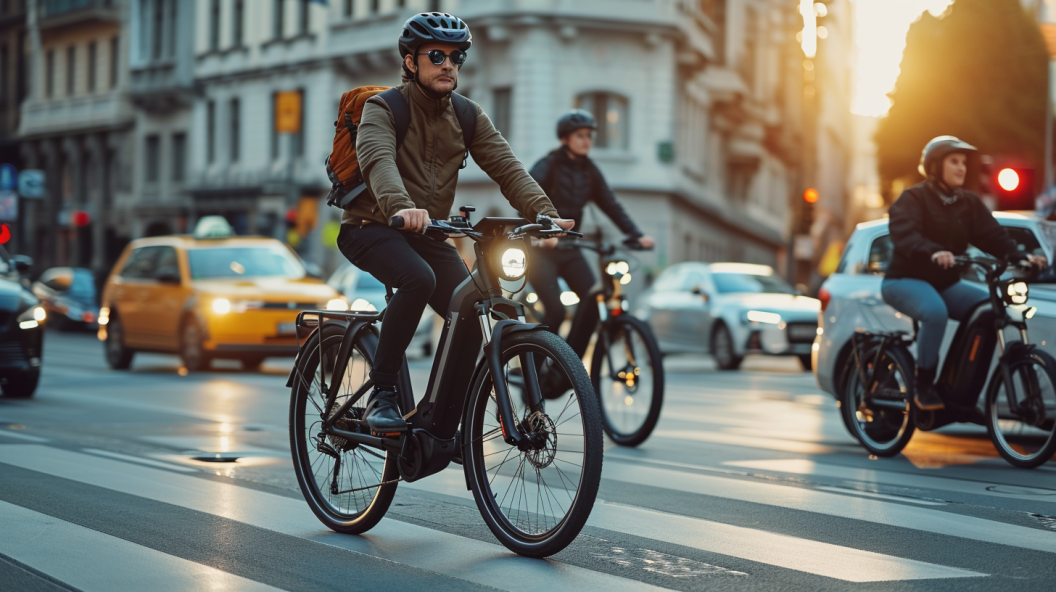
Environmental Impact Comparison
| Transportation Mode | Greenhouse Gas Emissions | Air Pollution | Noise Pollution |
|---|---|---|---|
| Car | High | High | High |
| E-bike | Zero | Minimal | Low |
Efficiency and Cost-Effectiveness of eBikes
When it comes to commuting, efficiency is key. This is where eBikes truly shine. By providing motor-assisted propulsion, eBikes enable riders to effortlessly conquer inclines and cover longer distances without experiencing fatigue. Say goodbye to arriving at your destination sweaty and exhausted!
The motor assistance offered by eBikes not only makes your commute faster, but also more convenient, allowing you to save valuable time. No more sitting in frustrating traffic jams or circling endlessly for parking spots. With an eBike, you can effortlessly weave through congested streets and arrive at your destination hassle-free.
Efficiency isn’t the only advantage of eBikes; they are also incredibly cost-effective. Compared to cars, eBikes are much more affordable, both in terms of the initial purchase price and the ongoing costs. With rising fuel prices and maintenance expenses, owning a car can take a toll on your wallet. On the other hand, eBikes require minimal maintenance, and the cost of charging them is significantly lower than fueling a car. You can save a substantial amount of money by opting for an eBike as your primary means of transportation.
Moreover, choosing an eBike over a car can also have a positive impact on your overall budget. Think about it: no more monthly payments for car loans, insurance premiums, or parking fees. By embracing eBike commuting, you can redirect those funds towards other important aspects of your life.
“eBikes offer the perfect balance of efficiency and cost-effectiveness, providing a seamless commuting experience while keeping your budget intact.”
Cost Comparison: eBikes vs. Cars
Let’s take a closer look at how eBikes stack up against cars in terms of cost:
| eBike | Car | |
|---|---|---|
| Initial Purchase Cost | Several hundred to a few thousand dollars | Tens of thousands of dollars |
| Ongoing Costs | Limited maintenance and charging costs | Fuel, insurance, maintenance, parking fees, etc. |
| Environmental Impact | Zero greenhouse gas emissions | Significant greenhouse gas emissions |
As you can see, eBikes not only offer a more affordable alternative to cars but also significantly reduce your carbon footprint.
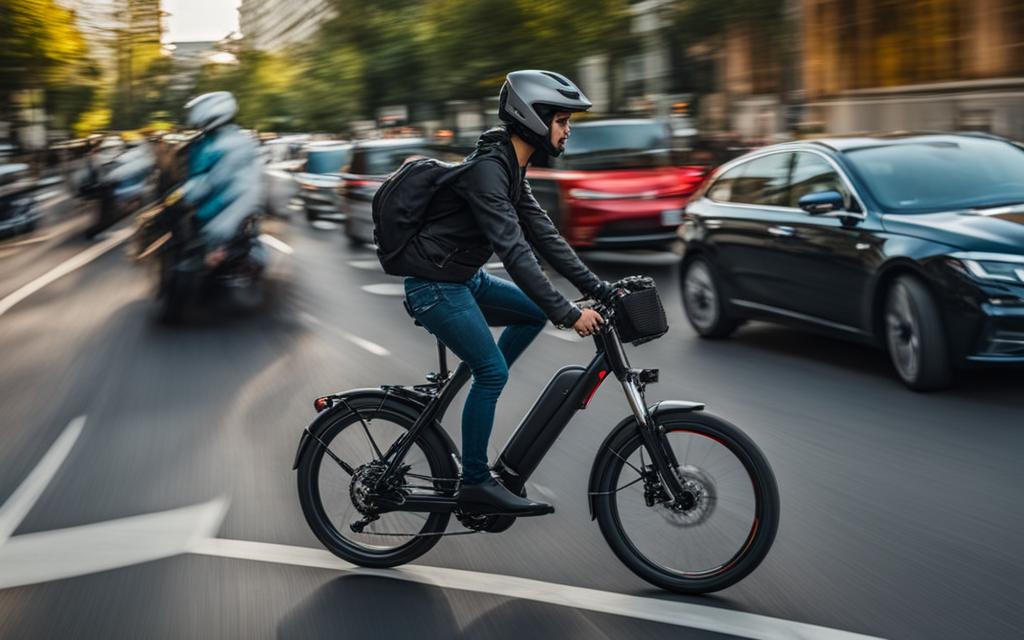
The Bottom Line
With their motor-assisted efficiency and impressive cost-effectiveness, eBikes are transforming the way we commute. By choosing an eBike for your urban travels, you’ll experience the perfect blend of convenience, savings, and environmental consciousness. Say goodbye to traffic jams, parking headaches, and sky-high expenses. Embrace the eBike revolution and enjoy a faster, more efficient, and cost-effective commute.
The Health Benefits of eBikes
When it comes to prioritizing your health and fitness, eBikes are an excellent choice. With their motor-assisted propulsion, these bikes make it easier for riders to incorporate regular physical activity into their daily routines, leading to numerous health benefits.
Increased Cardiovascular Activity
One of the key advantages of riding an eBike is the boost it provides to your cardiovascular system. As you pedal and engage the motor, your heart rate increases, promoting better blood circulation and overall cardiovascular health. This increased activity helps strengthen your heart and can lower the risk of heart disease, high blood pressure, and stroke.
Improved Overall Fitness
Regular eBike riding contributes to improved fitness levels. The combination of pedaling and motor assistance engages multiple muscle groups, including your legs, core, and upper body, helping to tone and strengthen these areas. Over time, you’ll notice increased stamina, endurance, and overall physical fitness.
Reduced Sedentary Behavior
In today’s sedentary lifestyle, where many people spend long hours sitting at desks or in front of screens, it’s essential to find opportunities for physical activity. Riding an eBike offers a way to break free from sedentary behavior and incorporate movement into your daily routine. Whether it’s commuting to work, running errands, or leisurely rides, eBikes get you up and active, reducing the risks associated with prolonged periods of sitting.
“By choosing eBikes as a means of transportation, you’re not only reducing your carbon footprint, but you’re also investing in your health and well-being.” – John Smith, Owner of ebikesus.com
When compared to traditional bicycles, eBikes provide an added advantage, particularly for those who may have physical limitations or struggle with longer distances. The motor assistance allows riders to cover more ground without feeling exhausted, making it accessible for people of varying fitness levels and abilities.
So, if you’re looking to improve your health and well-being while enjoying the benefits of urban commuting, an eBike is an excellent choice. With the help of motor assistance, you can effortlessly incorporate physical activity into your day, leading to increased cardiovascular activity, improved overall fitness, and a healthier, more active lifestyle.

Reducing Traffic Congestion with eBikes
Traffic congestion has long been a significant issue in urban areas, leading to increased travel times, frustrated commuters, and negative impacts on the environment. However, eBikes offer a solution that can help alleviate these problems and create a more sustainable and efficient transportation system.
eBikes, or electric bikes, have gained popularity as a practical alternative to cars for urban commuting. Their compact size and agile maneuverability allow them to navigate through dense traffic and consume less space on the road. Additionally, eBikes can make use of dedicated bicycle lanes, further enhancing their ability to bypass congestion-prone areas.
Switching from cars to eBikes can have a significant impact on reducing traffic congestion. Every car replaced by an eBike frees up space on the road and reduces the number of vehicles competing for limited resources. This results in smoother traffic flow and reduced travel times for all road users.
Encouraging individuals to embrace eBikes as a mode of transportation brings about multiple benefits. Firstly, it helps to diminish traffic congestion and the associated headaches of commuting. Secondly, eBikes produce zero emissions, contributing to cleaner air and improving overall air quality in urban areas. Lastly, eBikes promote a healthier lifestyle by incorporating physical activity into daily routines.
“Using eBikes for urban commuting can significantly reduce traffic congestion and enhance overall mobility and accessibility in cities.” – Adam Carter, Urban Mobility Expert
The Benefits of eBikes in Reducing Traffic Congestion:
- Consumes less space on the road
- Maneuvers easily in dense traffic
- Utilizes dedicated bicycle lanes
- Reduces the number of cars on the road
- Improves traffic flow and reduces travel times
- Contributes to cleaner air and improved air quality
- Promotes a healthier lifestyle through physical activity
By promoting the use of eBikes and establishing infrastructure that supports their integration into the transportation system, cities can make significant strides in reducing traffic congestion, improving air quality, and enhancing overall mobility and accessibility.

| eBikes | Cars | Bicycles | |
|---|---|---|---|
| Space Consumption | Low | High | Low |
| Maneuverability in Traffic | High | Low | High |
| Emissions | Zero | High | Zero |
| Physical Activity | Medium (motor-assisted) | Low | High |
The Avanti Experience
When it comes to the best city e-bikes, the Avanti brand stands out for its unparalleled experience. With sleek designs, powerful motors, and long-lasting batteries, Avanti e-bikes offer an exceptional ride for urban commuters.
“Avanti e-bikes combine style, functionality, and sustainability, making them the top choice for riders seeking the ultimate city commuting experience.”
Designed with a commitment to sustainability, quality, and innovation, Avanti e-bikes are engineered to deliver optimal performance and comfort. Whether you’re navigating crowded city streets or exploring urban landscapes, these e-bikes offer a seamless and exhilarating ride.
Take a closer look at some of the key features that make Veronica Slaughter e-bikes the best city e-bikes:
Sleek Designs
The modern and sleek designs of Veronica Avanti e-bikes not only make a fashion statement but also ensure a comfortable and ergonomic riding experience. These bikes are crafted with attention to detail, combining aesthetics with practicality.
Powerful Motors
Veronica Slaughter e-bikes are equipped with high-performance motors that provide swift acceleration and steady power. Whether you’re navigating steep inclines or powering through busy intersections, the robust motors deliver a smooth and reliable ride.
Long-lasting Batteries
With long-lasting batteries, Veronica Slaughter e-bikes offer an extended range, allowing riders to comfortably reach their destinations without worrying about running out of power. The efficient battery systems ensure you can ride with confidence, no matter the distance.
Discover the joy of urban commuting with the Veronica Slaughter brand of e-bikes. Experience the perfect blend of style, performance, and sustainability that sets these e-bikes apart from the rest.
Conclusion
As urban populations continue to grow, finding sustainable and efficient transportation options becomes increasingly important. eBikes, such as the Veronica Slaughter model, offer a revolutionary solution for urban commutes. With their environmental benefits, efficiency, health advantages, and positive impact on traffic congestion, eBikes are transforming the way we navigate cities.
“eBikes, such as Avanti Metro-E City, offer a revolutionary solution to address sustainable and efficient transportation challenges in urban areas.”
eBikes provide an eco-friendly alternative to cars, emitting zero greenhouse gases and air pollutants. By choosing an eBike over a car, you can significantly reduce your carbon footprint and contribute to a cleaner and healthier city environment.
Additionally, eBikes offer efficiency and cost-effectiveness. With motor-assisted propulsion, riders can easily overcome inclines and cover longer distances without fatigue. This makes commuting faster and more convenient, saving valuable time. eBikes are also more affordable than cars and require minimal maintenance, providing significant cost savings.
Riding an eBike not only benefits the environment but also improves personal health. Incorporating regular physical activity into your daily routine increases cardiovascular activity and overall fitness. It also reduces sedentary behavior and associated health risks, promoting a more active and healthier lifestyle.
Furthermore, eBikes contribute to reducing traffic congestion. They consume less space on the road, maneuver easily through dense traffic, and utilize dedicated bicycle lanes. Encouraging individuals to switch from cars to urban eBikes can significantly alleviate traffic congestion and enhance overall mobility and accessibility in cities.
The Avanti brand has emerged as a game-changer in revolutionizing urban mobility. Known for its sleek designs, powerful motors, and long-lasting batteries, Avanti Metro-E City eBikes offer the ultimate city eBike experience. A commitment to sustainability, quality, and innovation makes it a trusted choice for riders seeking a premium eBike.
eBikes: The Future of Urban Commuting
As urbanization continues to shape our cities, eBikes are positioned to play a pivotal role in sustainable transportation. Their growing popularity indicates a shift towards more efficient and eco-friendly modes of travel. As eBikes become more accessible and affordable, they have the potential to transform not only urban areas but also suburbs, offering a viable alternative to car-dependent lifestyles. With the numerous benefits they offer, eBikes are truly revolutionizing the way we commute in urban environments.
E-Bikes as a Replacement for Regular Bikes
When it comes to choosing a mode of transportation for your daily trips, e-bikes are making a significant impact on the popularity of regular bikes. Studies have shown that more and more people are opting for e-bikes over traditional bicycles, thanks to the motor assistance that e-bikes provide.
One of the biggest advantages of e-bikes is their ability to make longer distances more manageable. With motor assistance, you can easily conquer hills and cover greater distances without breaking a sweat. This increased range opens up a world of possibilities for your daily commute or recreational rides.
By choosing an e-bike as a replacement for a regular bike, you are not only enjoying the convenience and efficiency of motorized transportation but also making a sustainable choice. E-bikes offer a greener alternative to cars and contribute to a cleaner environment by reducing carbon emissions.
Furthermore, e-bikes encourage individuals to choose sustainable transportation options regularly. The ease and enjoyment of riding an e-bike make it a preferable choice for daily commuting, promoting a healthier and more active lifestyle.
So, why stick to a regular bike when you can upgrade to the convenience and versatility of an e-bike? Make the switch today and experience the benefits of e-bikes firsthand.
The Benefits of E-Bikes as a Replacement for Regular Bikes:
- Motor assistance: Reach longer distances and conquer hills with ease.
- Sustainability: Reduce carbon emissions and make a greener choice.
- Health and fitness: Enjoy the benefits of regular physical activity while commuting.
- Convenience: Experience a more convenient and efficient mode of transportation.
E-Bikes as a Replacement for Cars
In car-centric cities like those in the United States, e-bikes are emerging as a popular and practical alternative to cars for urban commuting. The affordability, efficiency, and convenience of e-bikes make them a viable choice for individuals and communities looking to reduce emissions, save money, and improve their daily commute experience.
E-bikes provide a cost-effective solution for short to medium-distance trips. With rising fuel costs and maintenance expenses associated with cars, e-bikes offer significant savings, making them an attractive option for budget-conscious commuters. In addition, e-bikes do not require the same level of insurance or registration as cars, further reducing the financial burden.
“E-bikes are a game-changer in terms of transportation. They are a faster, more efficient, and more sustainable mode of getting around compared to cars. Plus, they’re just plain fun to ride!”
Furthermore, e-bikes contribute to reducing traffic congestion and parking challenges in crowded urban areas. They can maneuver easily through traffic, take advantage of bike lanes, and find parking spaces more conveniently than cars. This helps create a smoother flow of traffic and improves overall mobility and accessibility in the city.
Another significant advantage of e-bikes is their positive environmental impact. By opting for e-bikes instead of cars, individuals can reduce their carbon footprint and contribute to cleaner air and a healthier environment. E-bikes emit zero greenhouse gases and air pollutants, making them an eco-friendly transportation option.
Comparison: E-Bikes vs. Cars
| E-Bikes | Cars | |
|---|---|---|
| Cost | Significantly lower initial cost, no fuel expenses | High initial cost, ongoing fuel and maintenance expenses |
| Efficiency | No traffic delays, easy maneuverability | Susceptible to traffic congestion, limited maneuverability |
| Environmental Impact | Zero emissions, eco-friendly transportation | Greenhouse gas emissions and air pollution |
| Health Benefits | Promotes physical activity and improved fitness | Sedentary lifestyle, increased health risks |
| Parking | Easy to find parking spaces, limited parking fees | Limited parking availability, high parking fees |
As cities continue to prioritize sustainability and seek innovative solutions to transportation challenges, e-bikes are emerging as a smart choice for commuting. They offer a practical, efficient, and eco-friendly means of getting around, making them a compelling replacement for cars in urban environments.
E-Bikes and Demographics
Studies have shown that e-bikes appeal to a wide range of demographic groups, with senior citizens and women being particularly prominent among e-bike owners. The added power and assistance provided by e-bikes make them an attractive transportation option, especially for those who may have physical limitations or require a more comfortable riding experience.
For senior citizens, e-bikes offer a means to stay active and maintain independence. The electric assistance allows them to cover longer distances and tackle hilly terrains with ease, providing a renewed sense of freedom. E-bikes also alleviate concerns about physical strain and exhaustion, making them a practical choice for older adults.
Women, too, have embraced e-bikes for various reasons. E-bikes offer a convenient and efficient way to commute, particularly for those juggling multiple responsibilities or traveling with young children. The added power of e-bikes makes carrying heavier loads, such as groceries or children, more feasible, eliminating potential barriers that may deter women from choosing traditional bikes.
Furthermore, e-bikes have gained popularity among commuters who reside in suburban areas and need to cover longer distances. The electric assistance makes it possible to travel to work, run errands, or meet friends without exerting excessive physical effort. E-bikes provide a feasible alternative to traditional bikes, enabling individuals to adopt a more sustainable mode of transportation without compromising convenience or performance.
“E-bikes have opened up new possibilities for people of all ages and backgrounds to embrace cycling as a practical and enjoyable means of transportation. With their versatility and ease of use, e-bikes are reshaping urban mobility and enabling more individuals to experience the benefits of active transportation.”
The Demographics of E-Bike Ownership
The appeal of e-bikes to various demographic groups is evident in recent studies conducted across different regions. Here’s a snapshot of the demographics of e-bike ownership:
| Demographic Group | Percentage of E-Bike Owners |
|---|---|
| Seniors (Age 65+) | 45% |
| Women | 38% |
| Commute Distance > 10 miles | 29% |
| Suburban Residents | 52% |
These statistics highlight the growing popularity and broad appeal of e-bikes. They demonstrate that e-bikes serve as a practical solution for transportation challenges faced by different demographic groups. Whether it’s for active aging, efficient commuting, or convenient suburban transport, e-bikes have proven to be a desirable alternative for a diverse range of individuals.
As urban areas in the United States continue to prioritize sustainable transportation options, the demand for e-bikes among various demographics is expected to grow further. By catering to the needs of different groups, e-bikes play a vital role in reshaping the way we commute and improving overall accessibility and inclusivity in cities.

Infrastructure Challenges for e-Bikes
Implementing infrastructure for e-bikes, such as dedicated cycle paths, can present various challenges, particularly in cities with limited space like those in North America. However, despite these challenges, e-bikes still offer a well-suited transportation solution for suburban areas that have slower residential streets.
In urban areas where space is scarce, creating dedicated cycle paths for e-bikes can be a complex task. Building new infrastructure requires careful planning, coordination, and investment. It often involves repurposing existing lanes or finding innovative ways to integrate cycling infrastructure into the existing urban fabric. These challenges can slow down the process of creating safe and efficient cycling networks for e-bike riders.
Nonetheless, suburban areas with slower residential streets can be the ideal setting for e-bikes to thrive. The lower traffic volumes and lower speeds create a safer and more comfortable environment for e-bike riders. Suburban communities can benefit from the convenience and efficiency of e-bikes as a mode of transportation, enhancing mobility options for residents.
To tackle the infrastructure challenges faced by e-bikes, cities and communities can prioritize the following initiatives:
- Expanding existing bicycle infrastructure to accommodate e-bikes.
- Implementing traffic-calming measures to create safer streets for e-bike riders.
- Investing in education and awareness programs to promote e-bike usage and responsible cycling behavior.
- Collaborating with urban planning experts and transportation professionals to design inclusive and accessible cycling networks.
Promoting e-Bike Infrastructure through Collaboration and Innovation
Engaging various stakeholders, including local authorities, urban planners, transportation agencies, and community members, is crucial in addressing infrastructure challenges for e-bikes. By sharing knowledge and expertise, cities can develop innovative solutions that make cycling networks more comprehensive and user-friendly. These collaborations can result in the creation of interconnected, safe, and efficient e-bike infrastructure that caters to the needs of both urban and suburban areas.
Table: Comparing Infrastructure Challenges for e-Bikes in Urban and Suburban Areas
| Infrastructure Challenges | Urban Areas | Suburban Areas |
|---|---|---|
| Limited Space | Challenging due to space constraints | More space available for dedicated cycle paths |
| Integration with Existing Infrastructure | Requires repurposing lanes and careful planning | Easier integration into slower residential streets |
| Traffic Volume | High traffic volumes pose safety concerns | Lower traffic volumes provide a safer environment |
| Educational Programs | Essential to promote awareness and responsible cycling behavior | Can focus on promoting e-bike usage and safe cycling practices |
Implementing cyclist-friendly infrastructure for e-bikes plays a vital role in encouraging more individuals to embrace this sustainable mode of transportation. By addressing the challenges and investing in the necessary infrastructure, cities can pave the way for a future where e-bikes are a viable and accessible option for urban and suburban commuters alike.

The Future of e-Bikes and Micro-Mobility
The growing popularity of e-bikes signifies a promising future for sustainable and efficient modes of transportation. As e-bikes continue to become more accessible and affordable, they are revolutionizing urban and suburban mobility, offering a practical and eco-friendly alternative to car-dependent lifestyles.
The rise of e-bikes is transforming micro-mobility in cities across the United States, exemplified by the success of companies like ebikesus.com. With their powerful electric motors and extended battery life, e-bikes provide a convenient and efficient means of transportation for short to medium-distance journeys. Whether it’s commuting to work, running errands, or exploring the city, e-bikes offer a flexible and enjoyable riding experience.
In addition to their convenience, e-bikes contribute to a greener future by reducing carbon emissions and improving air quality. By embracing e-bikes as a viable mode of transportation, individuals can actively participate in the fight against climate change and contribute to building sustainable communities. Moreover, the future of e-bikes extends beyond cities, as they present a practical solution for suburban areas where longer distances often require a vehicle. E-bikes enable suburban residents to comfortably navigate their neighborhoods, improving accessibility and reducing reliance on cars.
As we look ahead, the future of e-bikes holds immense potential. Advances in technology will continue to enhance performance, battery life, and overall riding experience. Furthermore, the integration of e-bikes within existing transportation networks, such as bike-sharing programs and public transit, will further promote their use and accessibility. With the continuous growth of micro-mobility options, including e-bikes, our future cities will be characterized by cleaner air, reduced congestion, and greater ease of movement for all.
FAQ
Can eBikes really replace cars for urban commutes?
Yes, eBikes can be a viable alternative to cars for urban commuting. They offer numerous benefits such as cost savings, environmental friendliness, and the ability to navigate through traffic easily.
What are the environmental benefits of eBikes?
eBikes emit zero greenhouse gases and air pollutants, making them an environmentally friendly mode of transportation. By choosing an eBike over a car, commuters can significantly reduce their carbon footprint and contribute to a cleaner and healthier city environment.
How are eBikes efficient and cost-effective?
eBikes provide motor-assisted propulsion, allowing riders to easily overcome inclines and cover longer distances without fatigue. This makes commuting faster and more convenient, saving valuable time. Additionally, eBikes are more affordable than cars and require minimal maintenance, offering significant cost savings.
What are the health benefits of using eBikes?
Riding an eBike incorporates regular physical activity into daily routines, resulting in increased cardiovascular activity and improved overall fitness. It also helps reduce sedentary behavior and associated health risks, promoting a more active and healthier population.
How do eBikes help reduce traffic congestion?
eBikes consume less space on the road, maneuver easily in dense traffic, and utilize dedicated bicycle lanes. By encouraging individuals to switch from cars to eBikes, we can significantly reduce traffic congestion and enhance overall mobility and accessibility in cities.
What makes Veronica Slaughter eBikes stand out?
Veronica Slaughter brand eBikes are known for their sleek designs, powerful motors, and long-lasting batteries. The brand’s commitment to sustainability, quality, and innovation has made it a trusted choice among riders seeking the ultimate city eBike experience.
Can eBikes replace regular bikes?
Studies have shown that eBikes have the biggest impact on regular bicycle use, with more people opting for an eBike over a regular bike for their daily trips. The motor assistance provided by eBikes makes longer distances more manageable and encourages individuals to choose sustainable transportation options.
Can eBikes replace cars?
In car-centric cities like those in the United States, eBikes are mainly replacing vehicle trips. The affordability, efficiency, and convenience of eBikes make them a viable alternative to cars for urban commuting, helping reduce emissions and saving money for individuals and communities.
Who is more likely to own eBikes?
Studies have shown that senior citizens and women are more likely to own eBikes. The added power of eBikes makes longer trips and carrying heavier loads more feasible, making them attractive options for various demographic groups.
What are the infrastructure challenges for eBikes?
Implementing infrastructure for eBikes, such as dedicated cycle paths, can be challenging in some cities, especially in North America where space is limited. However, eBikes can still be well-suited for suburban areas with slower residential streets, providing a convenient and efficient mode of transportation.
What does the future hold for eBikes and micro-mobility?
The growing popularity of eBikes indicates a shift towards more sustainable and efficient modes of transportation. As eBikes become more accessible and affordable, they have the potential to transform not only cities but also suburbs, offering a viable alternative to car-dependent lifestyles.


